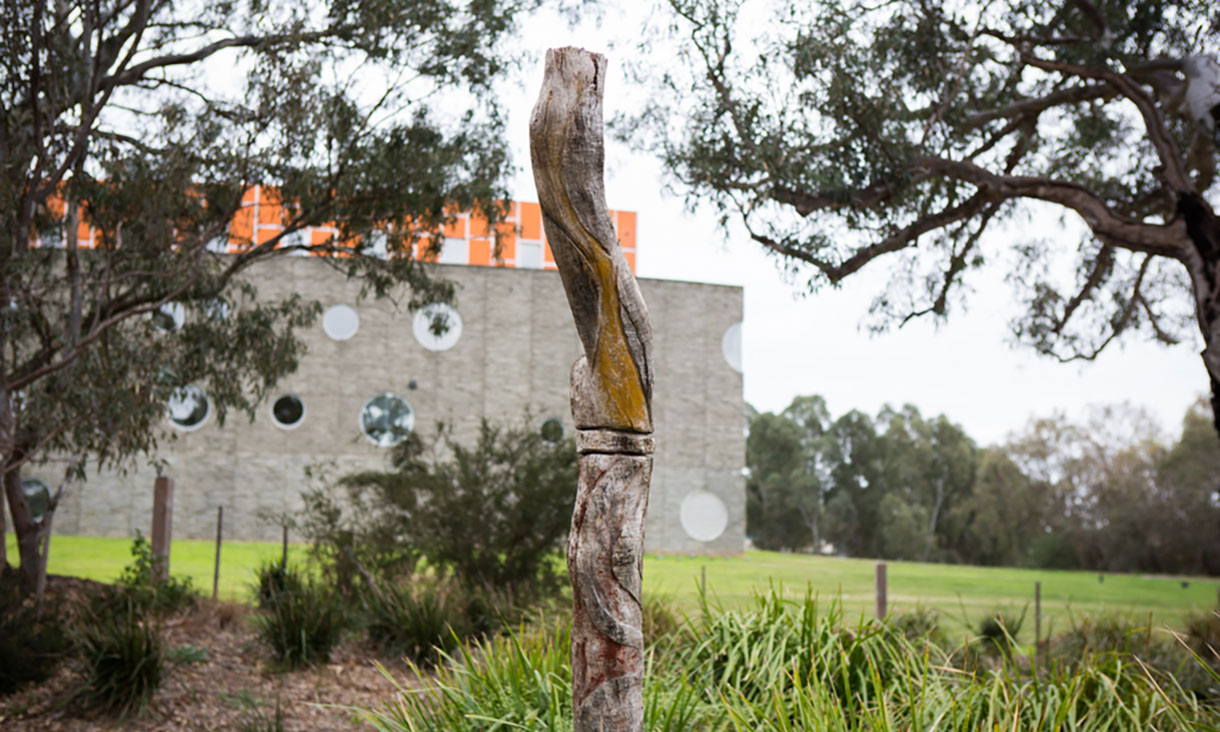RMIT’s campuses have a range of open and green spaces which are accessible to the general public free of charge.
Below are some examples of the wide variety of space types and uses:
City Campus
Our City campus has been an integral part of Melbourne's character for more than one hundred years. Unlike other university campuses, it isn’t closed off, or surrounded by walls - City campus life is Melbourne city life.
The campus is accessible by public transport and provides key features such as libraries, study spaces, Wi-Fi, childcare and a bustling fitness centre. RMIT’s facilities and buildings are constantly evolving and expanding to meet the demands of contemporary university life, with award-winning architecture and outdoor recreational spaces.
The Alumni courtyard is a large, open outdoor area framed by the bluestone walls of the Old Melbourne Gaol that was on the site since the 1840s. In the 1860’s this space contained a 2-story gaol hospital, which stood in the centre of the yard.
In 1878 Ned Kelly’s mother, Ellen, was arrested and sentenced to three years in the Old Melbourne Gaol for allegedly assaulting a police officer. She was working in the Gaol Laundry in 1880 when she was told that Ned had been arrested after the showdown at the Glenrowan Inn and she was allowed to visit Ned in his cell on the eve of his execution.
For most of the 1900s, the space was used as a Police Garage and was entirely enclosed in the late 1900s. Since 2003, following restorative and archaeological works in the space, the Alumni Courtyard has been open to the public. RMIT hosts many of its functions and events in the courtyard and is used as a gathering spot for students, staff and the wider community.
For more information on our historical buildings, visit our website.
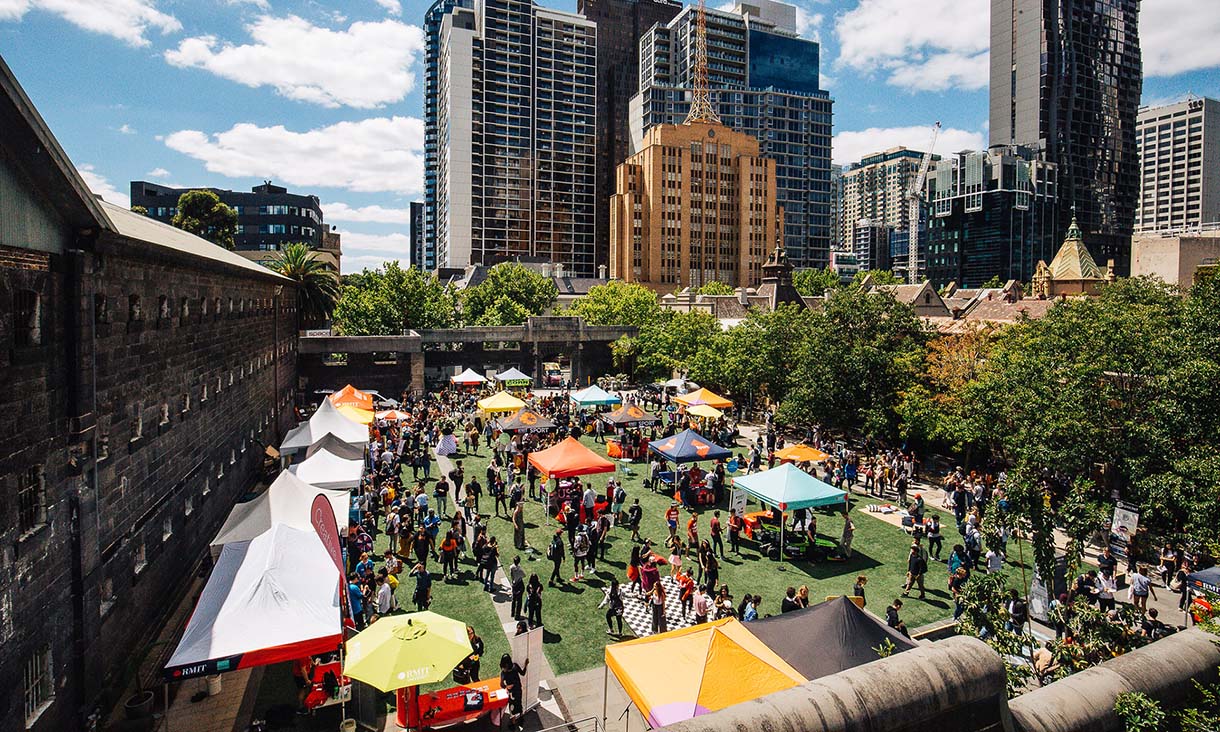
As part of the Old Melbourne Gaol, Building 11 is a bluestone building complex that includes the Gatehouse, Courtyard and Chapel. There are three courtyards in the complex and members of the public are free to explore the courtyard gardens which form part historic Gaol, a popular tourist attraction.
Sitting in the appropriately named Fig Tree Court, the gigantic, wall-hugging Port Jackson fig tree was one of more than 100 trees added to the Register that year. This type of tree is native to New South Wales and is unusual to be found growing in Victoria.
Between 70 and 90 years ago, a bird or bat deposited a seed which grew into the magnificent tree we see on the RMIT City campus today. This iconic fig tree was added to the City of Melbourne’s Exceptional Tree Register in July 2020. The register offers an opportunity to recognise, celebrate and protect exceptional trees throughout the City of Melbourne. The tree was also listed in the top ten of the 2021 Victoria Tree of the Year Awards.
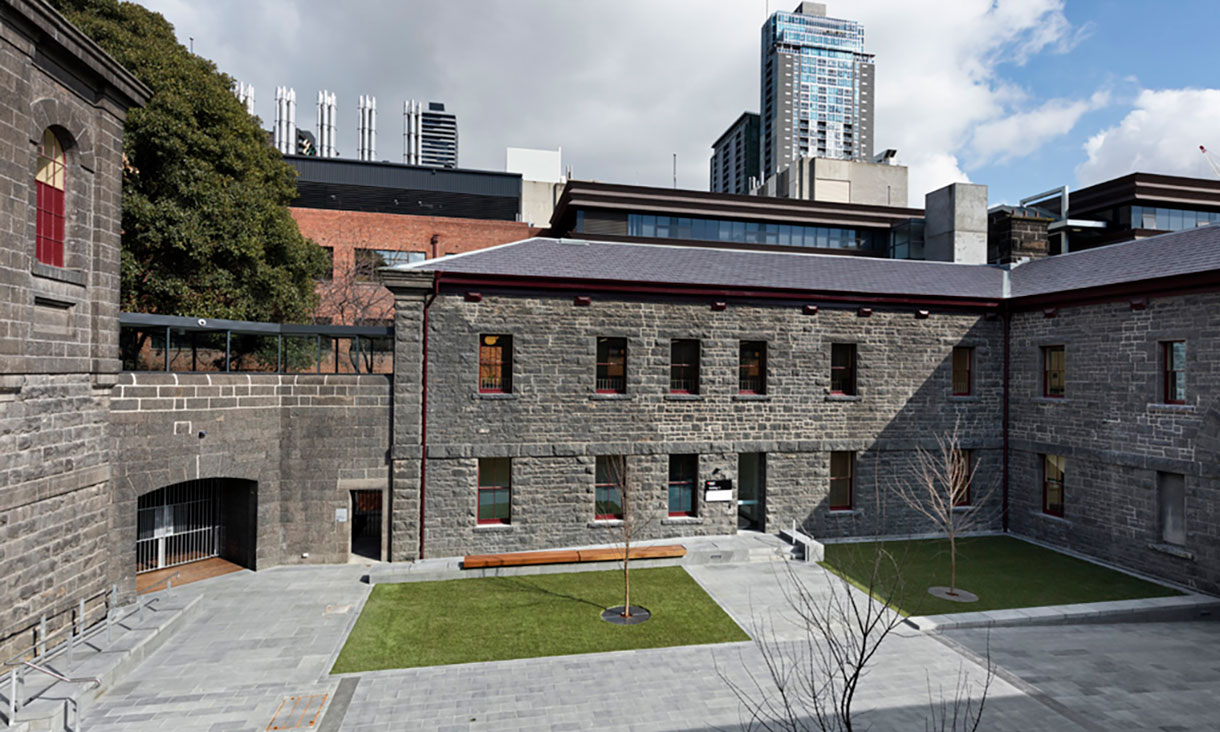
Ngarara Place is an Indigenous garden within the heart of RMIT's City campus.
The garden was built to recognise the world’s oldest continuing culture and its design draws on four key pillars – Connection to Country, Cultural Motifs, Contemporary Aboriginal Art, and Knowledge exchange.
Created, designed and built by a mainly Indigenous team, the unique space includes an Indigenous-themed courtyard area; amphitheatre-style seating; sculptural laser-cut smoke pit; and a space to host Indigenous ceremonies, gatherings and events – with the key design narrative of the landscape focusing on the seven seasons of the Kulin Nations.
Ngarara Place was designed by award-winning Melbourne-based architecture and interior design firm Greenaway Architects and can be located at the key cross access of Chemistry Lane, Building 5 and the Alumni Courtyard.
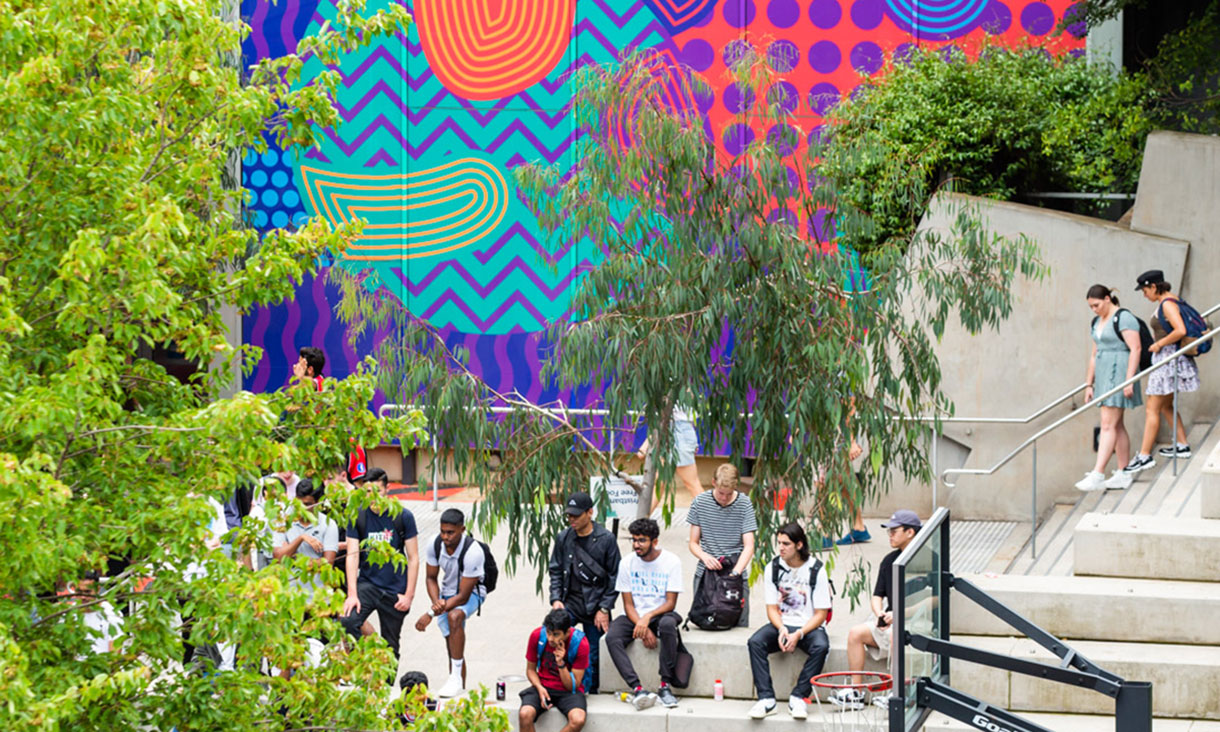
In 2019, the Ngarara Place artwork was updated with a new design as part of an ongoing program to provide contemporary representation of Australia’s First Nations people.
The artwork was designed by Marcus Lee, a graphic artist and proud descendant of the Karajarri people in Northern Western Australia.
Marcus’ artwork was created to visually express the diverse environment that is nurtured at RMIT.
The design features a centralised symbol of a person, that is inspired by voice, sovereignty and the self-determination of Aboriginal and Torres Strait Islander members of the RMIT community.
For more information about Indigenous sites at RMIT visit our website.
A’Beckett Urban Square is a recreational space that became an instant magnet for students and young urban dwellers. Located behind the Swanston Academic Building the site was redeveloped in 2014 from a car park into a publically-accessible 2,800 square metre park incorporating multi-use sports courts with spectator seating, table tennis, BBQ facilities, bike parking, Wi-Fi, plants in tubs and places to sit and relax.
Design by Peter Elliot Architects the square was conceived as a piece of urban theatre carved out of the surrounding city. The design approach was purposefully lean, developing upon the idea of a temporary and demountable installation. It is an active place for casual recreation, mainly for ball sports like basketball and volleyball. It is a place to socialise, relax and watch people. There is a playful use of bold colours and graphics including a specially commissioned large-scale artwork by Melbourne artist Ash Keating which wraps the site on two sides.
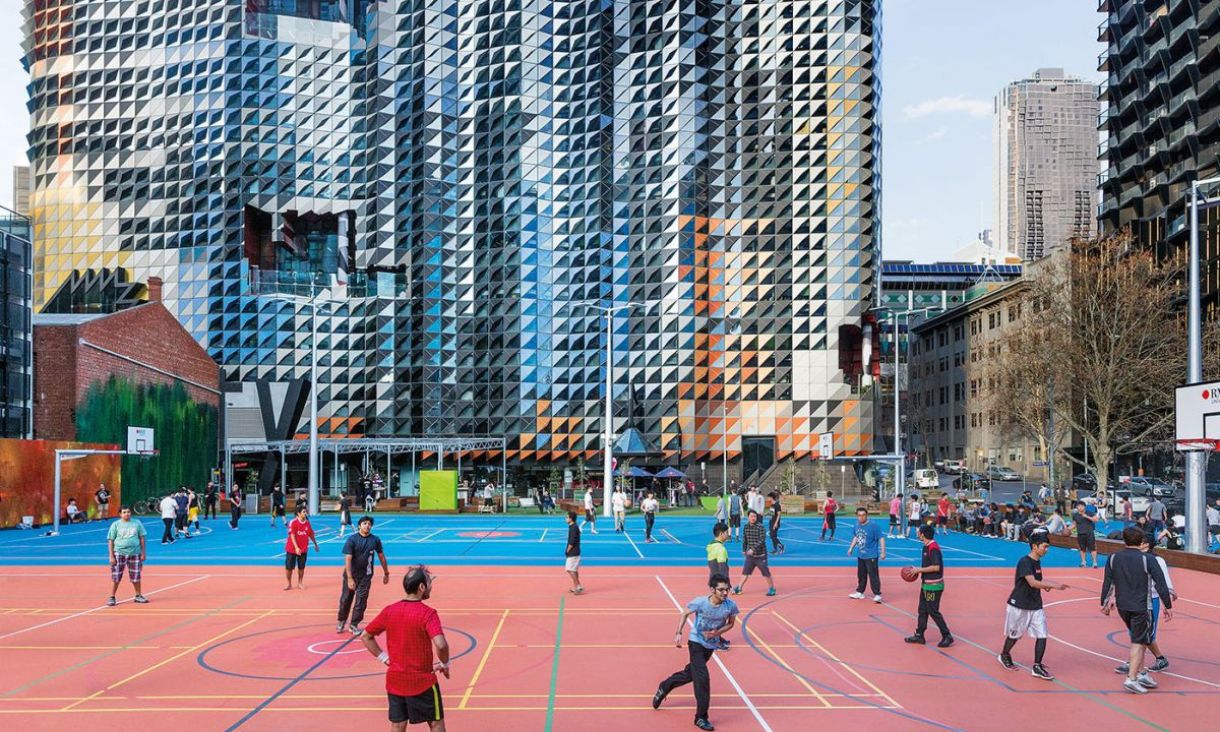
Brunswick campus
The campus is situated just a few minutes away from Sydney Road - a vibrant, multicultural area with a variety of shops, restaurants, pubs and markets. It is home to education students and many of our design-related programs and research, including textile technologies, fashion, merchandising and product development. The campus has a simple layout, with buildings located at the perimeter of the campus which creates a central courtyard area of approximately 4,000m2 which forms a fundamental role in the liveability and natural amenity of the campus.
In service of RMIT’s commitment to embedding sustainability across learning and teaching, RMIT’s Brunswick Dye Garden was completed in September 2018. A Garden Committee was established to oversee its management, with plant species carefully selected to create an experimental lab. A composting system was established to close the loop on waste streams and natural dyes from the selected plants are now used in the textiles studio. Learning, research and community opportunities relating to Indigenous knowledge, natural dye development and circular economy principles occur throughout the year.
For more information about the Brunswick campus visit our website.
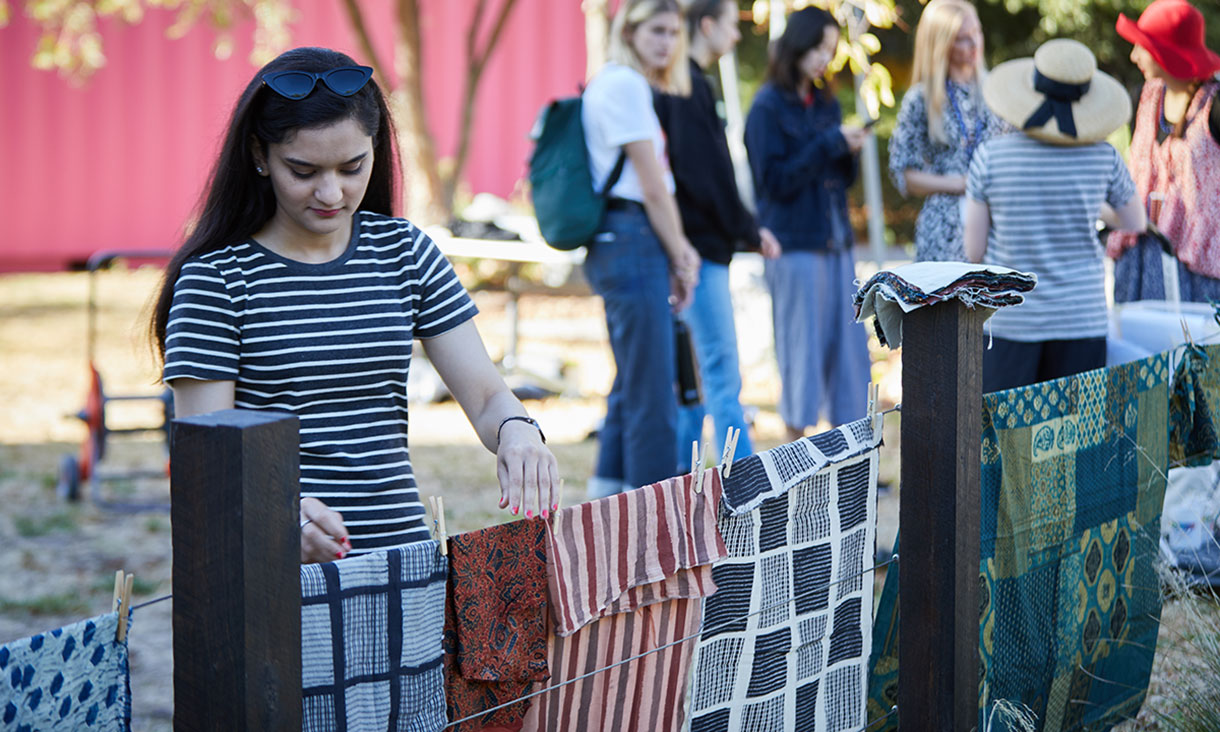
RMIT University’s Brunswick Campus has been announced as the new home for MPavilion 2022 thanks to a philanthropic cultural gift from the Naomi Milgrom Foundation.
Designed by Rachaporn Choochuey of architecture studio all(zone) Thailand, the award-winning pavilion will be positioned in the heart of the Brunswick campus’s central courtyard, drawing visitors into the communal space.
Experimenting with materials and forms used for the first time in Australia, all(zone), a female-led architecture studio based in Bangkok, Thailand, worked closely with Melbourne based Zilka Studio – led by RMIT academic Leanne Zilka – TENSYS and AECOM to realise the pavilion’s design.
It is hoped that the pavilion, opening the first Semester of 2024, will act as a catalyst for future students to explore and test new innovations in sustainable architecture and design.
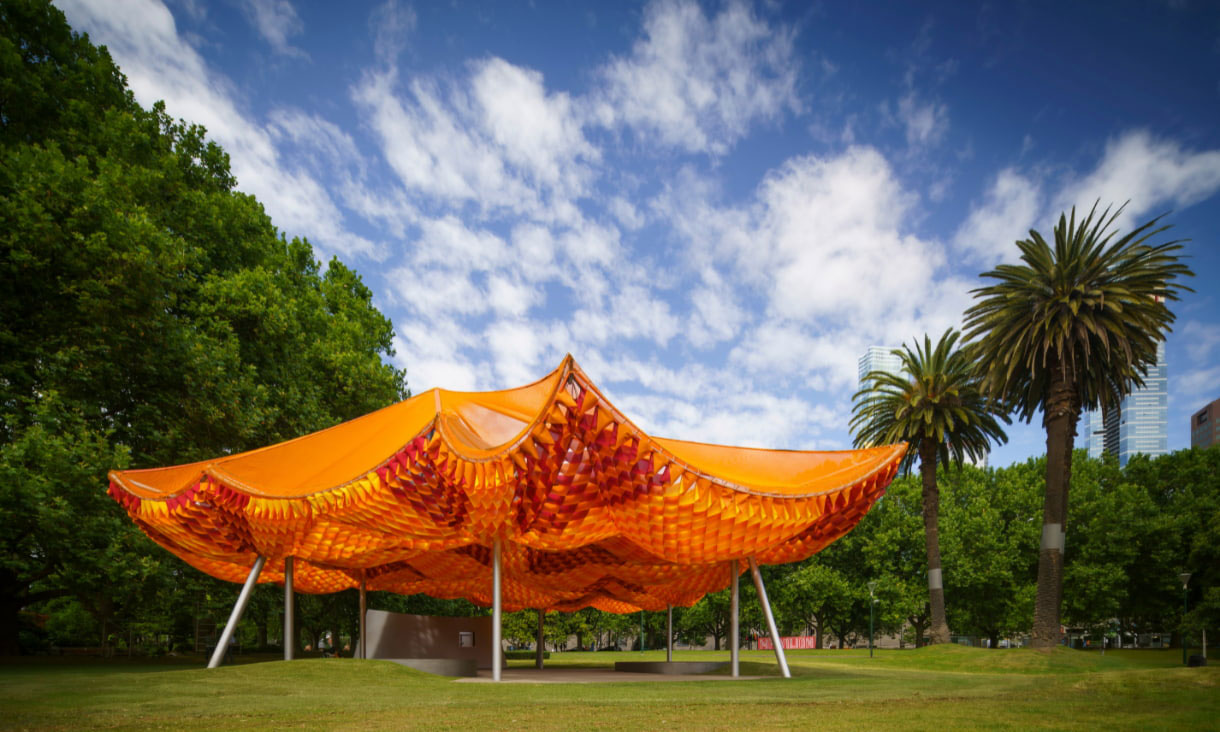
Bundoora campus
Our Bundoora campus. Set amongst almost 400,000 square metres (4,300,000 sq ft) of native parklands which hosts a range of outdoor features including sporting facilities, the Keelbundoora Scarred Tree and Heritage Trail, ornamental lakes and abundant greenery and wildlife for students, staff and the wider community to explore.
The Bundoora Pedestrian Spine acts as a promenade linking the centre of the campus to Plenty Road and its public transport connections. It provides a generous pedestrian walkway that responds to existing landscape conditions and is furnished with a range of seating, amphitheatres and activity hubs along its length. The promenade follows a meandering alignment that takes its cues from adjacent alluvial patterns and weaves among significant Eucalyptus trees. Instead of a formal alignment, typical of many university spines, the design's informal geometry allowed a sense of the surrounding landscape to be incorporated into the pedestrian experience.
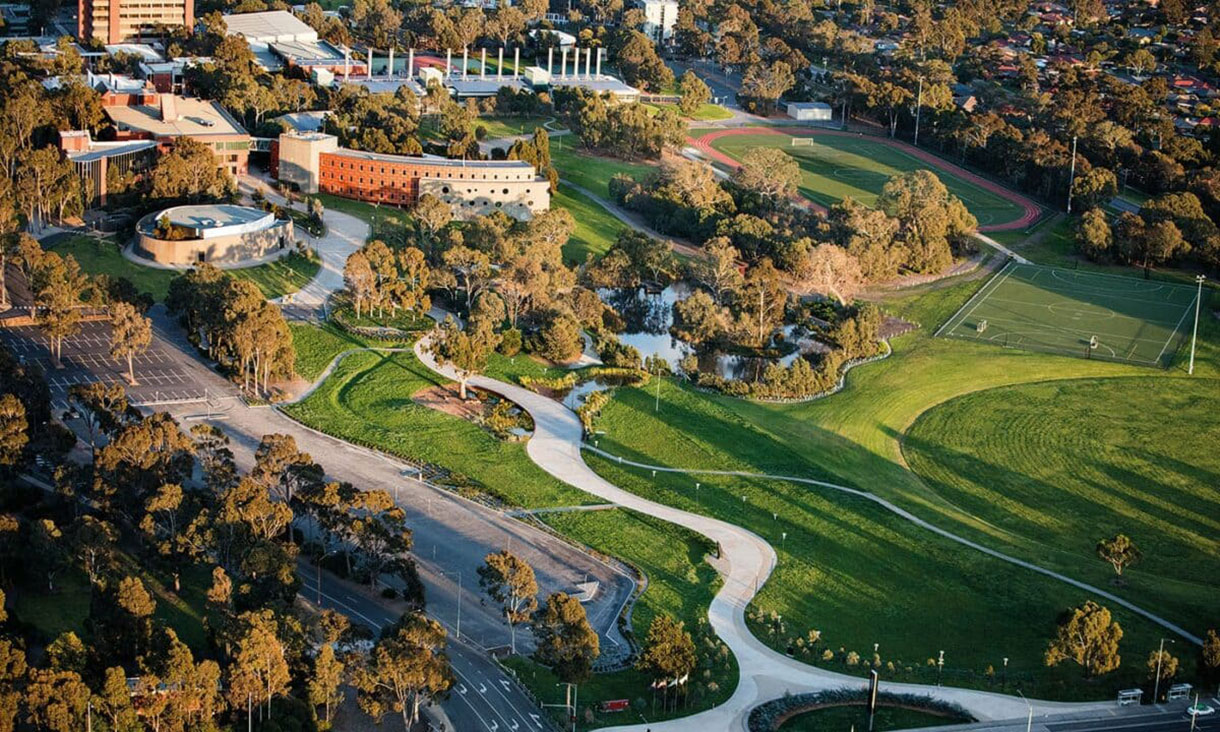
RMIT Bundoora campus has six scarred trees that are rare and fragile reminders of the resource harvesting techniques practiced by hundreds of generations of Australia's Aboriginal and Torres Strait Islander people.
The tree scars tell us a great deal about the Wurundjeri clan, the traditional owners of the lands in and around Melbourne.
Keelbundoora is named after a Wurundjeri clan ancestor. As a child in 1835 he was present at the signing of the Batman Treaty, which marked European colonists’ arrival. Keelbundoora’s descendants helped create the trail. A self-guided tour allows the RMIT community and visitors take an awe -inspiring walk through RMITs Bundoora redgum grassy woodland learning about the Wurundjeri relationship to this amazing ecosystem.
For more information about Indigenous sites at RMIT visit our website.
